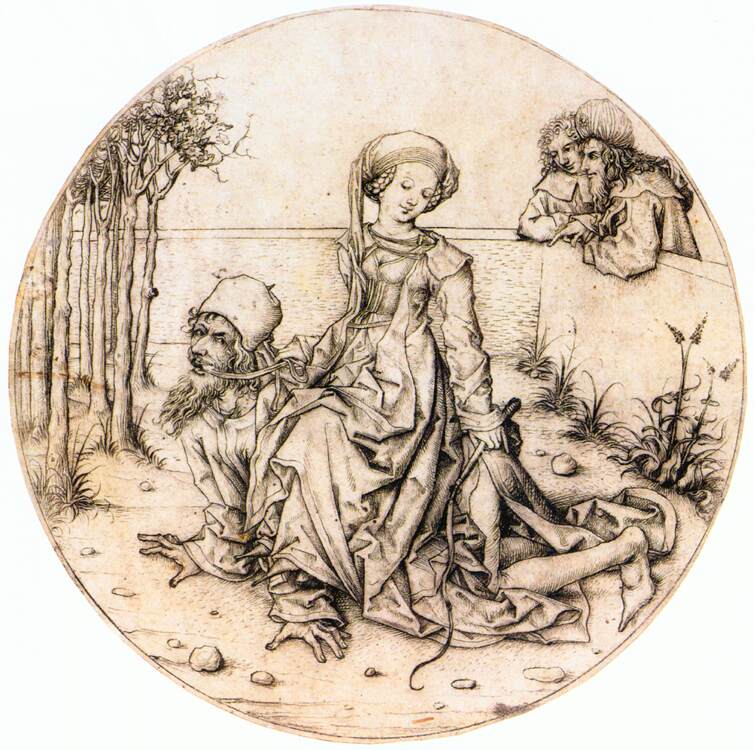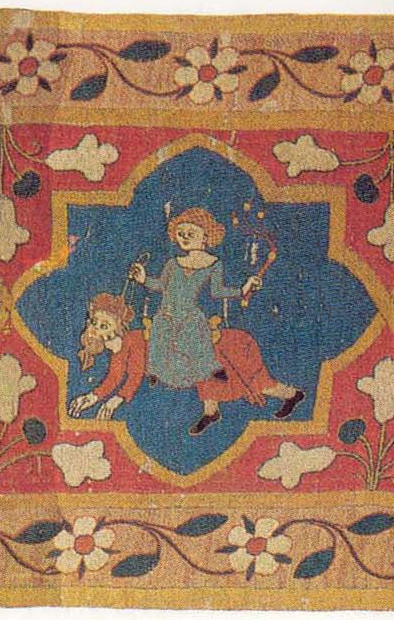Jun
8
2015
Bastian Asmus

Aristotle and Phyllis aquamanile, 2015 by Bastian Asmus made after a 15th century original from the low countries.
The Middle High German lay of Aristotle and Phyllis probably originated in the 13th century in the upper Rhine region between Basel and Strasbourg. The story was a popular motif and is found not only in sculptural works, but also in tapestries and drawings. King Philip of Macedonia’s son Alexander, later called the Great, is educated by Aristotle. The young Alexander, madly in love with the beautiful Phyllis, is scolded by his teacher for his mental absence and warned of the dangers of love and/or women. Aristotle effects the separation of the lovers through intervention with the King. Musing on revenge beautiful Phyllis seduced Aristotle. As price for her love she demanded that she could ride around in the gardens on his back. Whilst doing so Aristotle is discovered by the Queen and Aristotle falls prey to shame and disgrace, because he could not meet his own requirements. He was exiled and pondered over the wickedness of the world.

Aristotle and Phyllis. Hausbuchmeister 15th century. Source: Wikimedia Commons.
The Aristotle and Phyllis aquamanile was modelled in wax and cast in the lost wax technique. It can now be seen in the newly founded European Hanseatic league Museum.
no comments | tags: Aquamanile, aquamanilia, archaeology, archaeometallurgy, art, casting, practical archaeometallurgy, sculptor | posted in Aquamanile, Archaeometallurgy, Metal casting, practical metallurgy, Reconstructions
May
23
2015
Bastian Asmus

This aquamanile in the form of a knight on horseback was cast in 2015 in Bastian Asmus’ workshop, and leans heavily on an original from the 13th century. It was cast in bronze by the lost wax technique.
Next to lion and griffin aquamanile a knight on horseback was a widely used form of aquamaniles . One of these I made earlier this year and cast it in bronze in my workshop. The original aquamanile is from the 13th century from northern Germany, probably around Hildesheim.
This object displays the impressive skills of the 13th century artists and foundrymen. The arms, legs and stir-ups are modelled full round, which adds quite a bit of complexity to the preparation of the casting mould; especially when we are considering that these moulds were not made like modern investment moulds, but by applying moulding loam to every bit of wax surface. The materials thickness of the bridle or stir-ups is in places less than 2mm in diameter. The knight is not modelled separately but cast in one piece with the horse.
Just as the griffin aquamanile this reconstruction can be seen in the newly opened European Hanseatic League Museum in Lübeck, Germany.
Literature
{1698736:I8UJUA8R}
harvard1
default
asc
0
2726
no comments | tags: Aquamanile, aquamanilia, archaeometallurgy, art, casting, practical archaeometallurgy, Rotgießer, Rothschmied, sculptor | posted in Aquamanile, Archaeometallurgy, Info, Metal casting, practical metallurgy, Reconstructions
Dec
17
2014
Bastian Asmus

 ..for any microscope you might happen to work with. During your microscopy sessions, did you ever wish for less of the dull work, such as noting meta data, contrast method, sample id, photo no or image width? Well – I did.
..for any microscope you might happen to work with. During your microscopy sessions, did you ever wish for less of the dull work, such as noting meta data, contrast method, sample id, photo no or image width? Well – I did.
I did wish for a long time to have a way that my microscope and my camera would speak to each other whenever I change objectives. I am working with Zeiss Universal microscope, mostly with reflected polarising light, i.e. there is no objective revolver. I have to change the objectives individually, which of course, all has to do with the ability to centre the objective for certain steps in polarising microscopy.
To make a long story short: the old days where I have to sit there with a notepad and have to write down all these dull informations are over! From now on my camera, or rather my computer registers any change of my microscope objective and adds this information to my micrographs automatically.
Continue reading
no comments | tags: archaeology, archaeometallurgy, How to, linux, photograhpy | posted in Image Meta information, Lab work, Micrograph, Photography, remote capture, tethered shooting




 ..for any microscope you might happen to work with. During your microscopy sessions, did you ever wish for less of the dull work, such as noting meta data, contrast method, sample id, photo no or image width? Well – I did.
..for any microscope you might happen to work with. During your microscopy sessions, did you ever wish for less of the dull work, such as noting meta data, contrast method, sample id, photo no or image width? Well – I did.